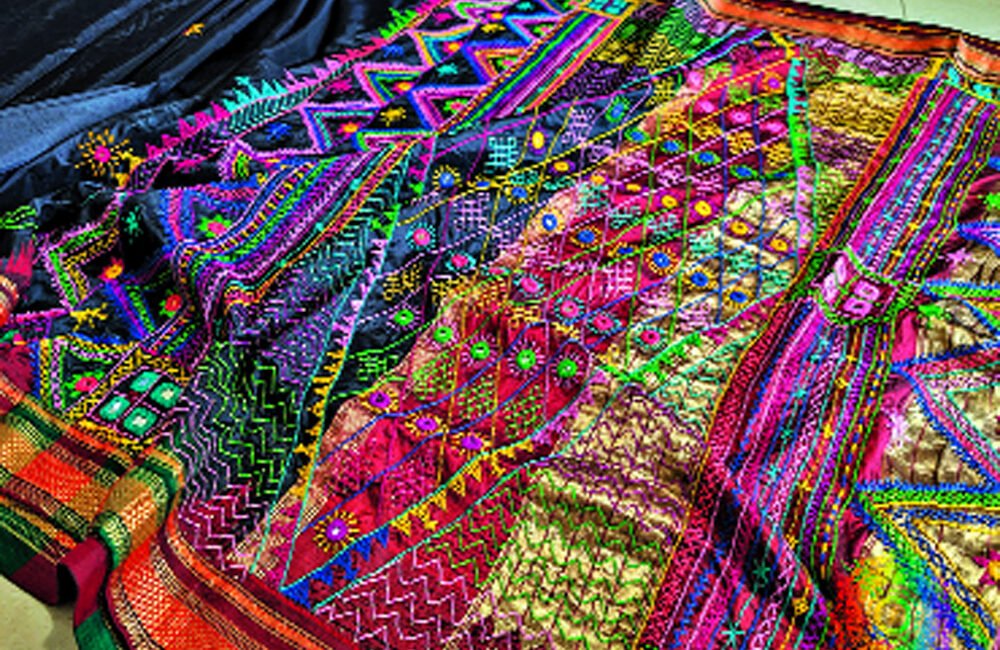Traditional arts and crafts have long been the soul of cultural heritage, carrying stories, skills, and traditions passed down through generations. However, in today’s fast-paced world, many of these age-old art forms are on the brink of extinction due to industrialisation, changing consumer preferences, and a lack of sustainable opportunities for artisans.
Lambani embroidery, a rich and intricate art form practised by the nomadic Lambani community, has long been a symbol of India’s vibrant handicraft heritage. Characterised by elaborate stitch work, mirror embellishments, and vibrant colours, this craft carries stories of culture and tradition. The history of Lambani embroidery is a captivating one, rooted in centuries of tradition and craftsmanship. Originating from the nomadic Lambani tribe in India, also known as the Banjaras, this intricate art form has evolved over time while preserving its cultural essence.
As they began settling in the 16th century, embroidery became an integral part of their daily lives, adorning clothing, tents, and household items. Primarily practised by women, this craft played a significant role in shaping Lambani identity and heritage. Characterised by rich symbolism, Lambani embroidery features motifs inspired by nature, including animals, birds, flowers, and geometric patterns. Over time, Lambani embroidery has adapted to new influences and techniques. Despite these changes, the essence of Lambani embroidery remains deeply tied to its historical roots, continuing to be a testament to the tribe’s artistic legacy. To preserve and propel this exquisite craft onto a larger stage, Jaypore, a leading advocate for India’s artisanal heritage, has embarked on a meaningful collaboration with Lambani artisans. Among them is Uma Devi, a skilled craftswoman whose life has been transformed through this initiative. Uma Devi, once struggling to make ends meet, has now found a sustainable source of income, allowing her to educate her children and improve her family’s standard of living. She shares her journey, recalling the financial hardships she faced and how her craft, once undervalued, has now become a means of empowerment. “As we take our first steps in collaborating with the Lambani artisan community, we see immense potential in bringing their intricate embroidery and unique artistry to the forefront.” says Manu Gupta, Vice-President and Brand Head of Jaypore.
A crucial part of this initiative is Jaypore’s partnership with Sandur Kushala Kala Kendra, a prominent organisation dedicated to supporting traditional crafts. “As we embark on this collaboration, our focus is on learning from these master artisans and working towards reviving their traditional techniques while exploring ways to give them a modern expression,” says Radhika Chhabra, Creative Head of Jaypore.
This partnership is not just about reviving an ancient art form-it’s about creating sustainable livelihoods, fostering gender empowerment, and ensuring that the legacy of Lambani embroidery continues to inspire generations.




No Comment! Be the first one.